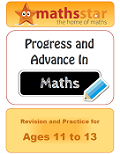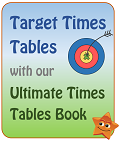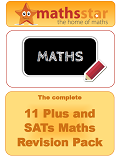
|
GCSE Higher Maths Revision Notes
Here's a list of topics and question types to help you revise for the Higher GCSE Maths exam. It looks short . . . but that's because they are only additional topics; you also need to know all the foundation topics! You will have learnt a LOT of topics, so make sure you re-visit the foundation skills to make sure nothing has been forgotten.
Click here to download the list below as a PDF
-
Use fractional and negative indices
-
Work with surds (irrational numbers)
-
Use SOH CAH TOA
-
Use the Sine and Cosine rules and the rule for area of a triangle
-
Use all of the circle theorems – check our revision sheet for these
-
Solve simultaneous equations - try our revision sheet
-
Factorise quadratic equations (i.e. changing an equation like 2x² + 6x + 4 into (x + 2)(x + 2))
-
Solve quadratic equations (e.g. x² + 6x + 5 = 0) by factorising
-
Solve quadratic equations using the formula
-
Use the “difference of 2 squares”, e.g. x² - 9
-
Work out cumulative frequency, draw the graph and find the median and quartiles
-
Read and draw a box plot
-
Create histograms
-
Create frequency polygons
-
Understand stretches and shifts of graphs (this is when you have f(x) )
-
Construct a bisector of an angle and a perpendicular bisector of a line using a pair of compasses
-
Use a scale factor to find out the missing lengths on similar shapes
-
Understand that, with similar shapes, you multiply by the scale factor twice when finding area and three times when finding volume
-
Complete a probability tree
-
Find the probability of events: know when to multiply the fractions and when to add them
-
Change the subject of a formula
-
Use standard form
-
Use direct proportion and indirect proportion (using the α symbol)
-
Understand and use vectors
-
Find the equation of a perpendicular line
-
Use compound interest
-
Simplify algebraic fractions
-
Write recurring decimals as fractions
-
Use the equations for surface area and volume of spheres and cones
-
Substitute values into an equation so you can draw the graph
-
Use upper and lower bounds
If you don't have a GCSE workbook to use for practice, you might find the CGP workbook handy.

|



 Perfect for 11 Plus & SATs Revision
Perfect for 11 Plus & SATs Revision
|